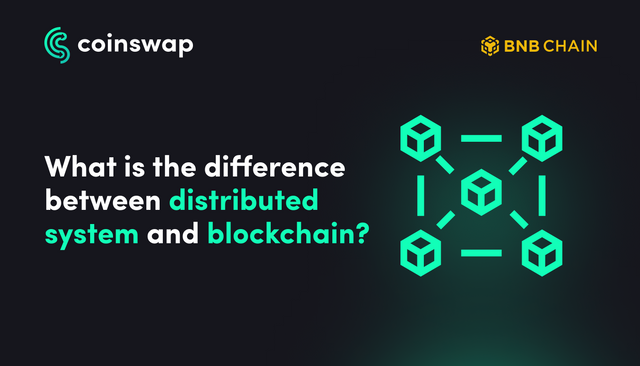Understanding the Difference Between Blockchain and Distributed Systems

Understanding the Difference Between Blockchain and Distributed Systems 🚀🔗
In the world of technology, two terms often surface in discussions about modern innovations: blockchain and distributed systems. While these concepts are related and sometimes overlap, they are distinct in their structures, purposes, and functionalities. Let's dive into the differences between blockchain and distributed systems to understand their unique attributes and applications. 🌐💡
What is a Distributed System? 🌍💾
A distributed system is a network of independent computers that work together to achieve a common goal. These systems are designed to share resources, coordinate tasks, and function as a single coherent entity despite being physically separated. The key features of distributed systems include:
- Decentralization: The system operates without a central point of control, enhancing robustness and fault tolerance.
- Scalability: Distributed systems can grow by adding more nodes, making it easier to handle increased workloads.
- Redundancy: Multiple nodes ensure that even if some fail, the system can continue to operate smoothly.
- Coordination: Nodes communicate and coordinate actions to perform tasks efficiently.
Examples of distributed systems include cloud computing platforms, peer-to-peer networks, and large-scale web services. They are fundamental to the functionality of the internet and various enterprise applications.
What is Blockchain? 🔗💎
Blockchain, on the other hand, is a specific type of distributed system with a unique architecture designed for recording transactions in a secure, immutable, and transparent manner. The main characteristics of blockchain are:
- Decentralization: Similar to distributed systems, blockchain operates without a central authority.
- Immutability: Once data is added to the blockchain, it cannot be altered or deleted, ensuring a permanent record.
- Transparency: All participants in the network can see the transactions, promoting trust and accountability.
- Consensus Mechanisms: Blockchain relies on protocols like Proof of Work (PoW) or Proof of Stake (PoS) to agree on the validity of transactions.
Blockchains are most commonly associated with cryptocurrencies like Bitcoin and Ethereum, but their applications extend to supply chain management, healthcare, finance, and beyond.
Key Differences 🤔🔍
While both blockchain and distributed systems share the principle of decentralization, several key differences set them apart:
- Purpose: Distributed systems focus on resource sharing and task coordination, whereas blockchain emphasizes secure, transparent, and immutable record-keeping.
- Data Management: Blockchain data is immutable and transparent, while distributed systems may allow data modification and may not inherently provide transparency.
- Consensus: Blockchain uses specific consensus algorithms to validate transactions, unlike traditional distributed systems that rely on different synchronization techniques.
- Use Cases: Distributed systems support a broad range of applications from cloud services to databases, while blockchain is tailored for secure transaction records and decentralized applications (dApps).
In conclusion, while both blockchain and distributed systems are decentralized, their purposes and functionalities differ significantly. Blockchain’s emphasis on immutability and transparency makes it ideal for applications requiring secure and unalterable records, whereas distributed systems are best suited for scalable and efficient resource sharing and task coordination. Understanding these differences can help in selecting the appropriate technology for specific needs. 🌟🔧